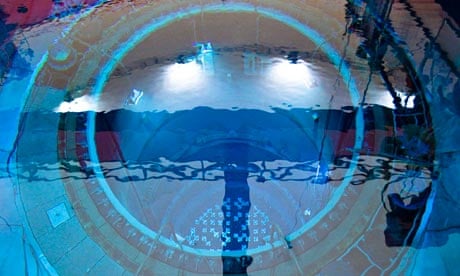The relative costs and benefits of nuclear energy have been the subject of heated debate in recent years thanks to a combination of factors, including the need to cut carbon emissions and the 2011 accident at Fukushima, Japan. Critics argue that nuclear is not only dangerous but also unnecessary for tackling climate change; supporters claim the risks are small and that abandoning nuclear would make an already huge challenge even harder and more expensive.
One thing that's clear is that decarbonising electric power will be critical for solving climate change. Even assuming big gains in efficiency, the world will need about twice as much electricity in 2050 as it does today. The problem is that, as of today, most of the world's electricity comes from coal (40%) and gas (20%), with hydroelectric (16%) and nuclear (13%) by far the largest low-carbon sources. In Europe most of the new generating capacity being added today is low-carbon wind. In China, the world's largest energy consumer, most of the new capacity is coal, although it is also the world's largest investor in both wind and nuclear. Worldwide, the majority of new capacity is still coal or gas.
This situation needs to be turned around radically and urgently if we are to meet the objective that world leaders set in Copenhagen in 2009 of limiting the average increase in global temperatures to 2C. By then, the great majority of the world's energy will need to come from low-carbon sources. In developed countries, such as the UK, virtually all of it. 2050 may seem a long way away until you remember that a new coal or nuclear power station being planned today will probably still be operating then.
The main low-carbon options for the coming years and decades, in no particular order, are hydro, wind, nuclear, biofuels, solar power and coal and gas burned in plants that can capture and store the carbon emissions (CCS). The availability of hydro, wind and solar depends, to varying degrees, on local conditions. Wind and solar are intermittent and cannot provide 'baseload' power (a drawback that can be mitigated to some degree, at a cost, by large connecting power networks or large-scale energy storage). Biofuels depend on the availability of plant materials. For these reasons a mixture of sources will be needed and the optimum choices will be different in different parts of the world. CCS is the only low-carbon option other than nuclear that can provide baseload power in regions where hydro or large-scale biofuel materials are not available. To that extent, particularly in the UK, where we know that we have suitable natural storage reservoirs, CCS provides a possible alternative to nuclear if it can be successfully demonstrated.
There is a lot of uncertainty about the cost of nuclear power compared to the alternatives. A recent UK study estimated the cost of nuclear as falling somewhere above 'low cost' options such as onshore wind, mini-hydro and some biofuels, but below 'expensive' options such as offshore wind and CCS. Early stage technologies such as wave are estimated as having still higher costs. The report suggests that the uncertainties are considerable and that these increase as one looks towards the future. Comparatively, solar power is expensive today but its cost has been declining sharply and it could emerge as a highly competitive option, especially in sunny parts of the world. CCS is a technical possibility but it is hard to know what it will cost until it has been demonstrated.
Following the Fukushima accident, most of the developing countries with plans for new nuclear stations, and many of the developed countries, are expected to press ahead, though with some delay for safety reviews. However, Germany, where 23% of electricity was nuclear, has decided to phase out nuclear power entirely by 2020 while also seeking to reduce greenhouse gas emissions 40% below 1990 levels. The jury is still out on how successful this will be. Germany can be expected to pioneer the way towards much heavier reliance on renewables but some analysts are concerned about the cost and the possible need for additional gas or even coal plants.
Not surprisingly, energy modellers do not all agree on which low-carbon energy technologies will be needed most in 2050. Amongst the better known commentators, the International Energy Agency project a nuclear share of 20%, while the International Institute for Applied Systems Analysis similarly predict a significant share for nuclear in two of their three headline scenarios, but also offer a scenario in which nuclear has been phased out.
All in all, there is no simple answer to this question. If you believe strongly enough that we should phase out nuclear then with sufficiently strong political commitment around the world, this could be done consistently with tackling climate change. However, as a practical matter, we are far from being on course to limit carbon emissions to levels consistent with a 2C target. Ruling out one of the major low-carbon technology options currently available is bound to add to the difficulty and the risk of what is already looking like a very tough challenge. Balancing the problems of nuclear power against its contribution to climate mitigation (and other energy policy objectives) is an inescapable dilemma.
This article was written by Neil Hirst of the Grantham Institute for Climate Change, Imperial College London, in collaboration with the Guardian
The ultimate climate change FAQ
This answer last updated: 27.09.2012
Read about the project and suggest a question
Report an error in this answer
Related questions
Are solar, wind and marine power too intermittent to be useful?
What's energy efficiency and how much can it help cut emissions?
Why do economists describe climate change as a 'market failure'?
This editorial is free to reproduce under Creative Commons
This post by The Guardian is licensed under a Creative Commons Attribution-No Derivative Works 2.0 UK: England & Wales License.
Based on a work at theguardian.com
